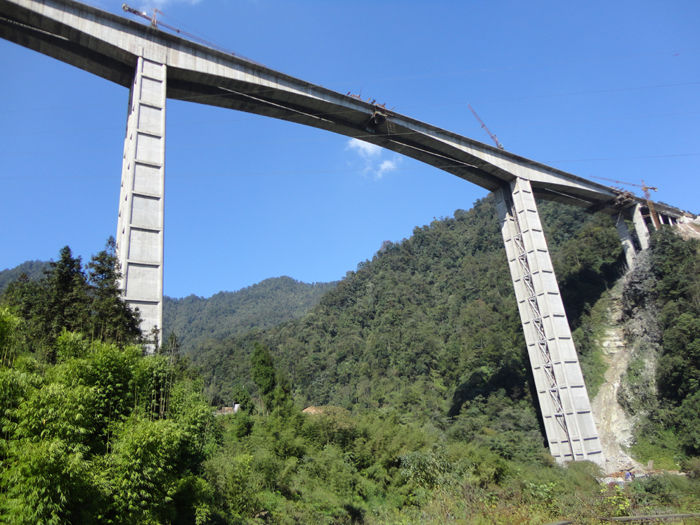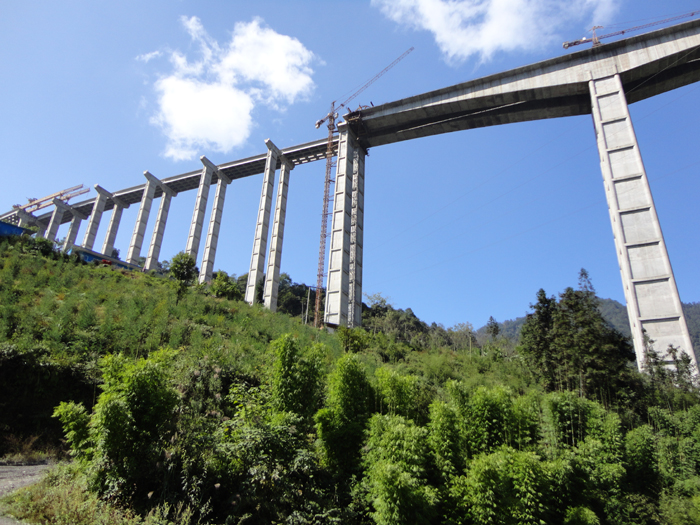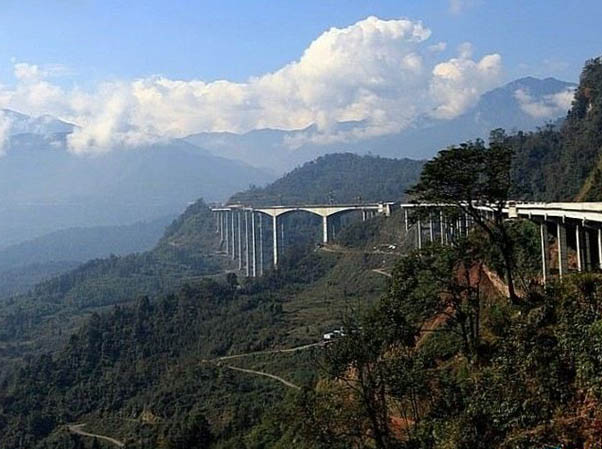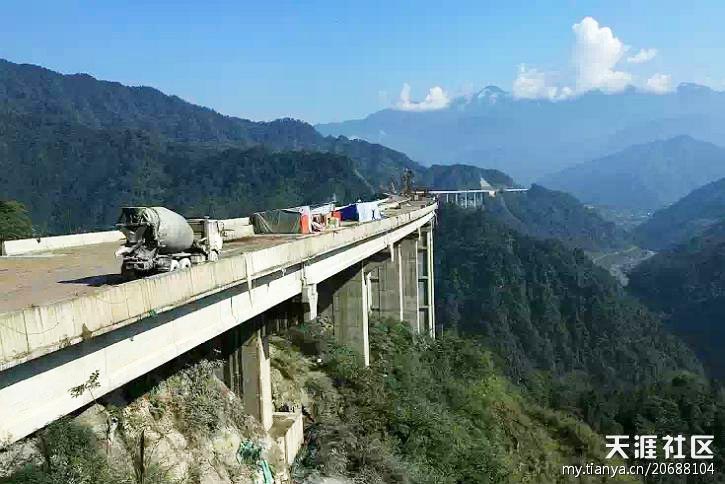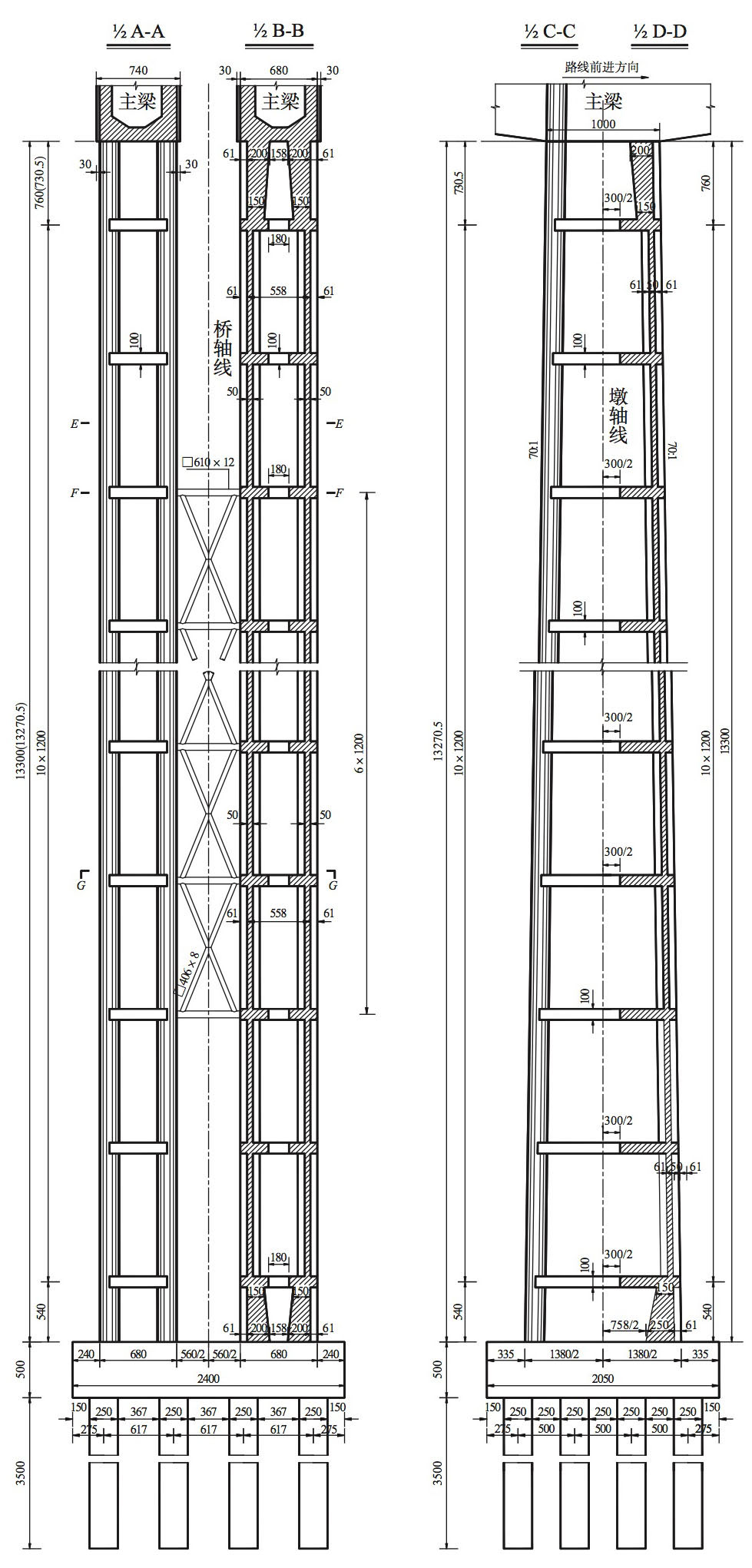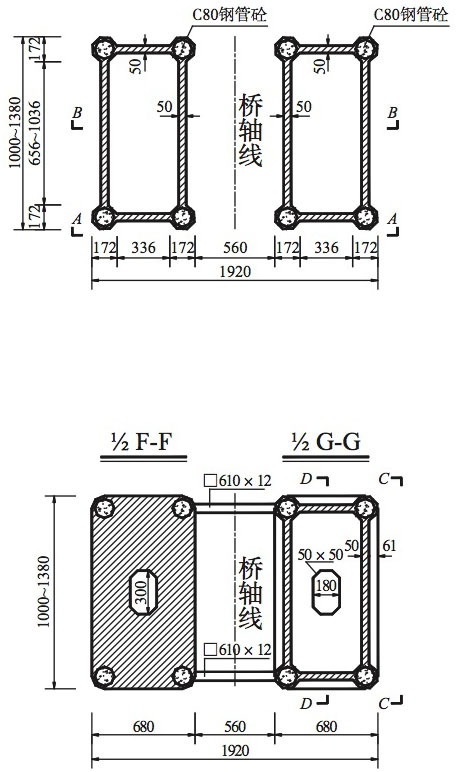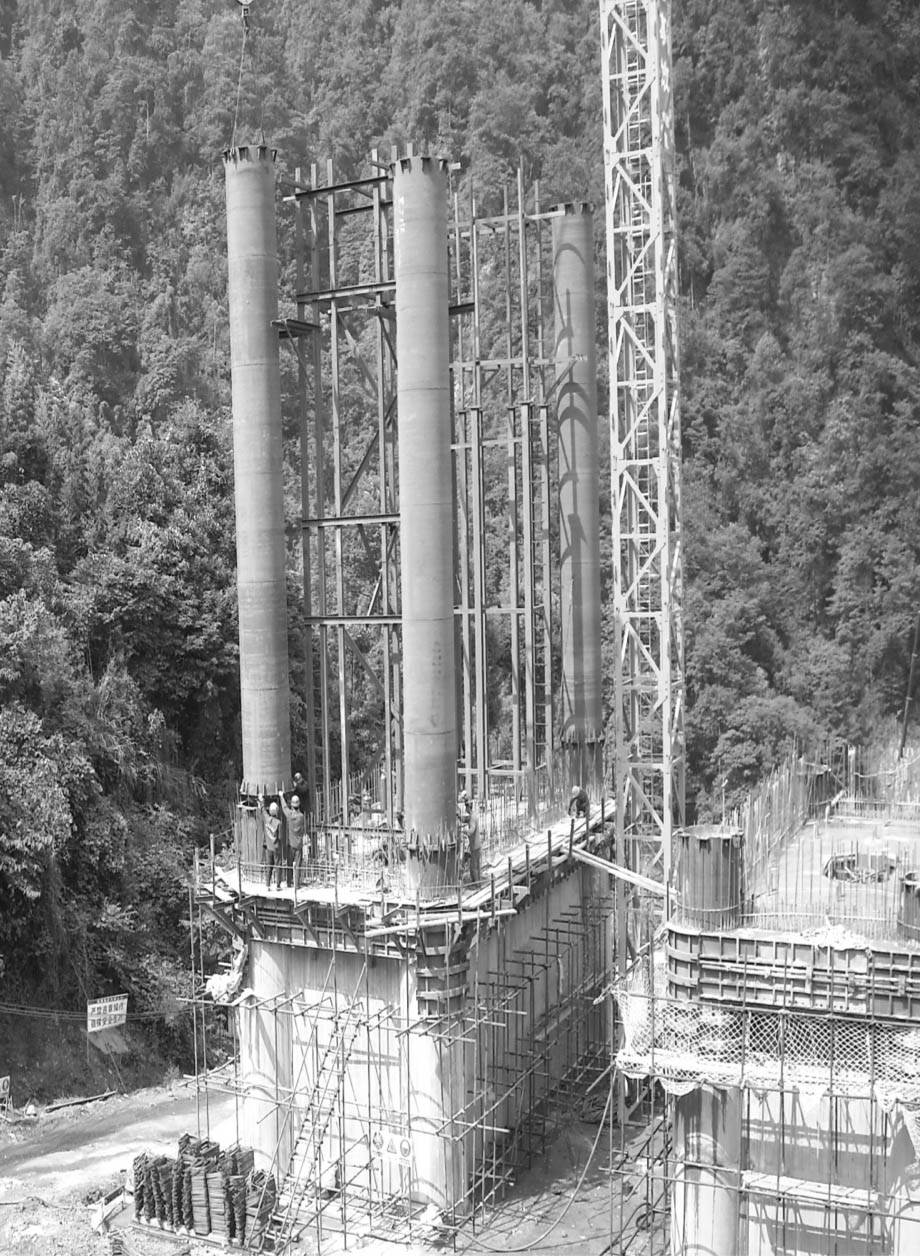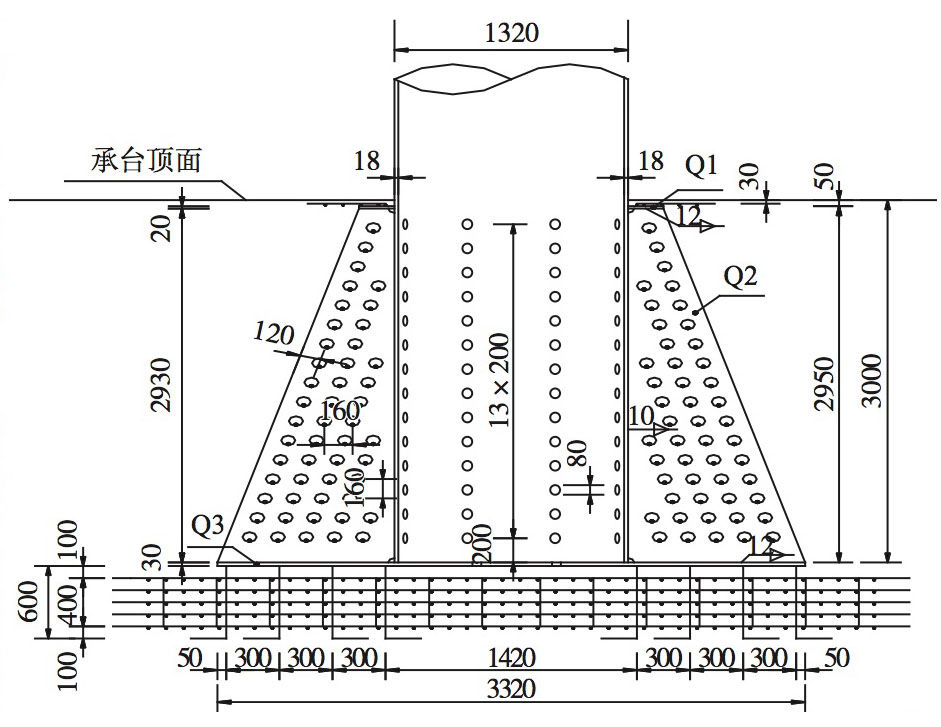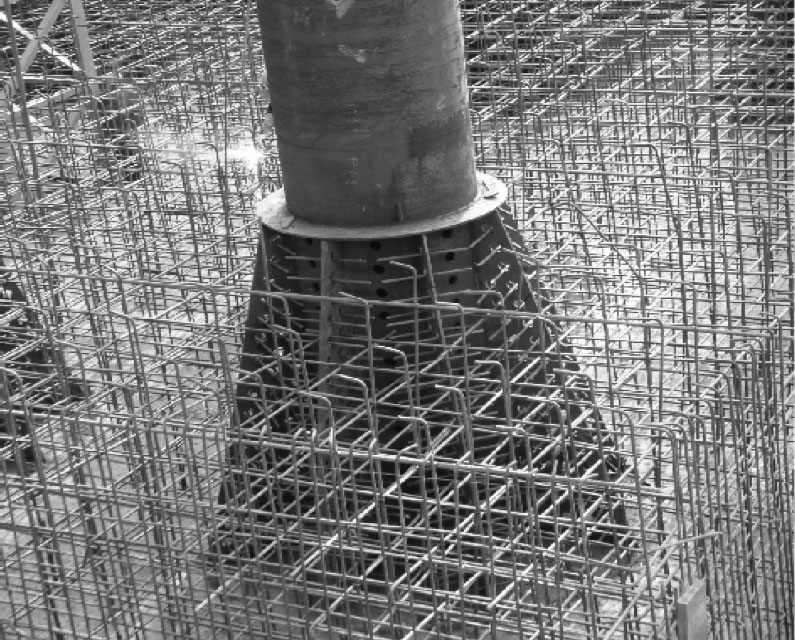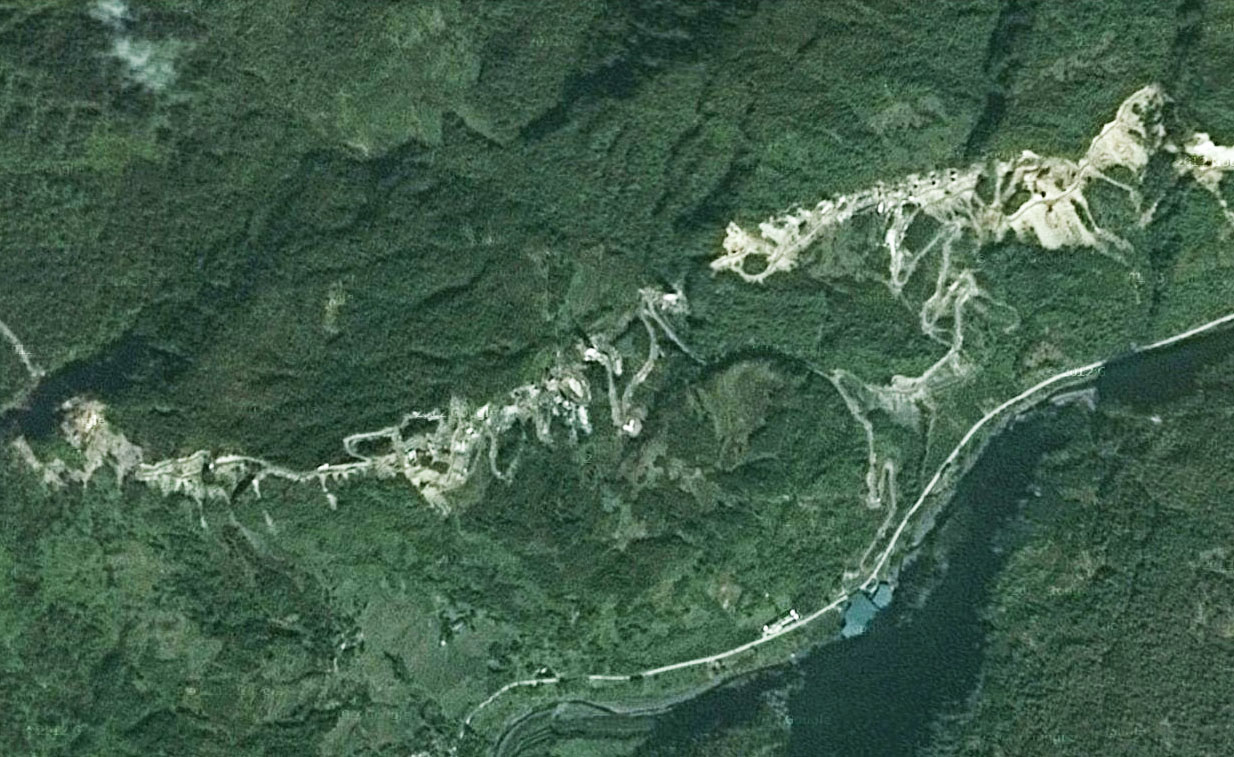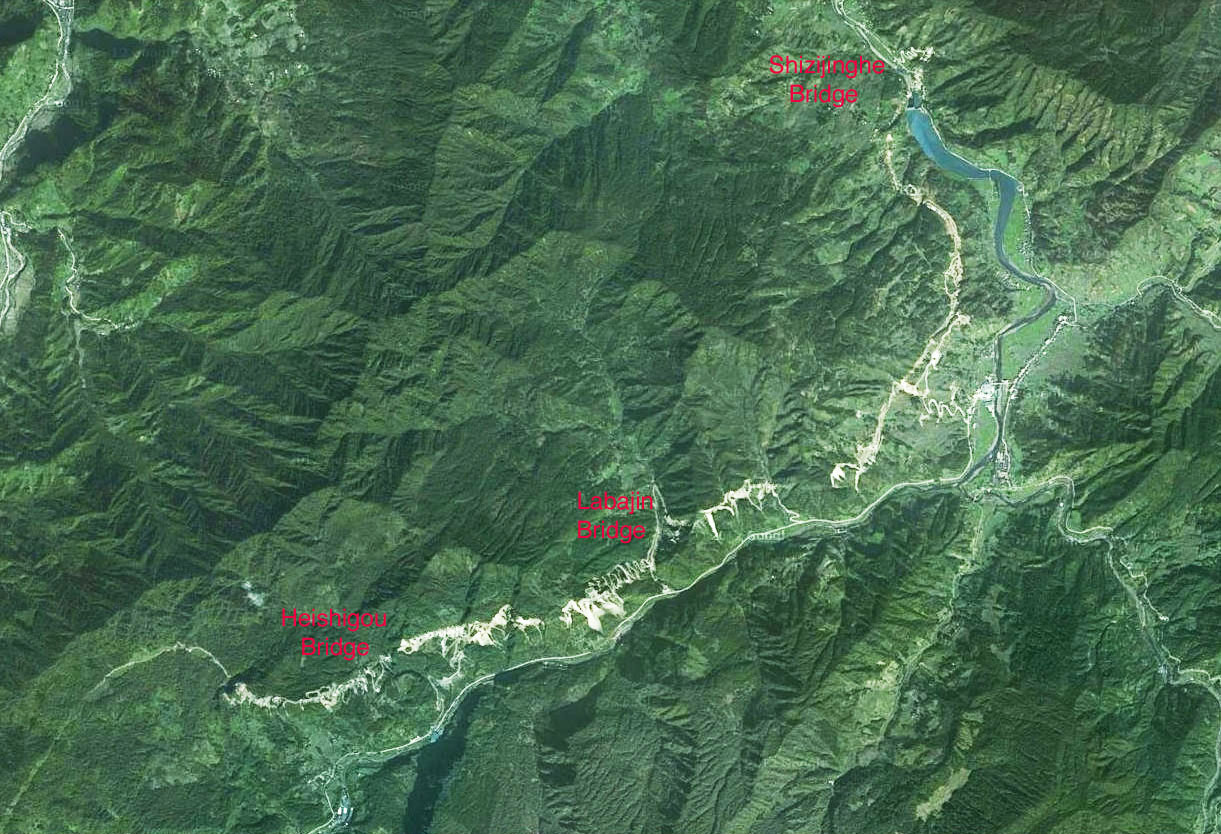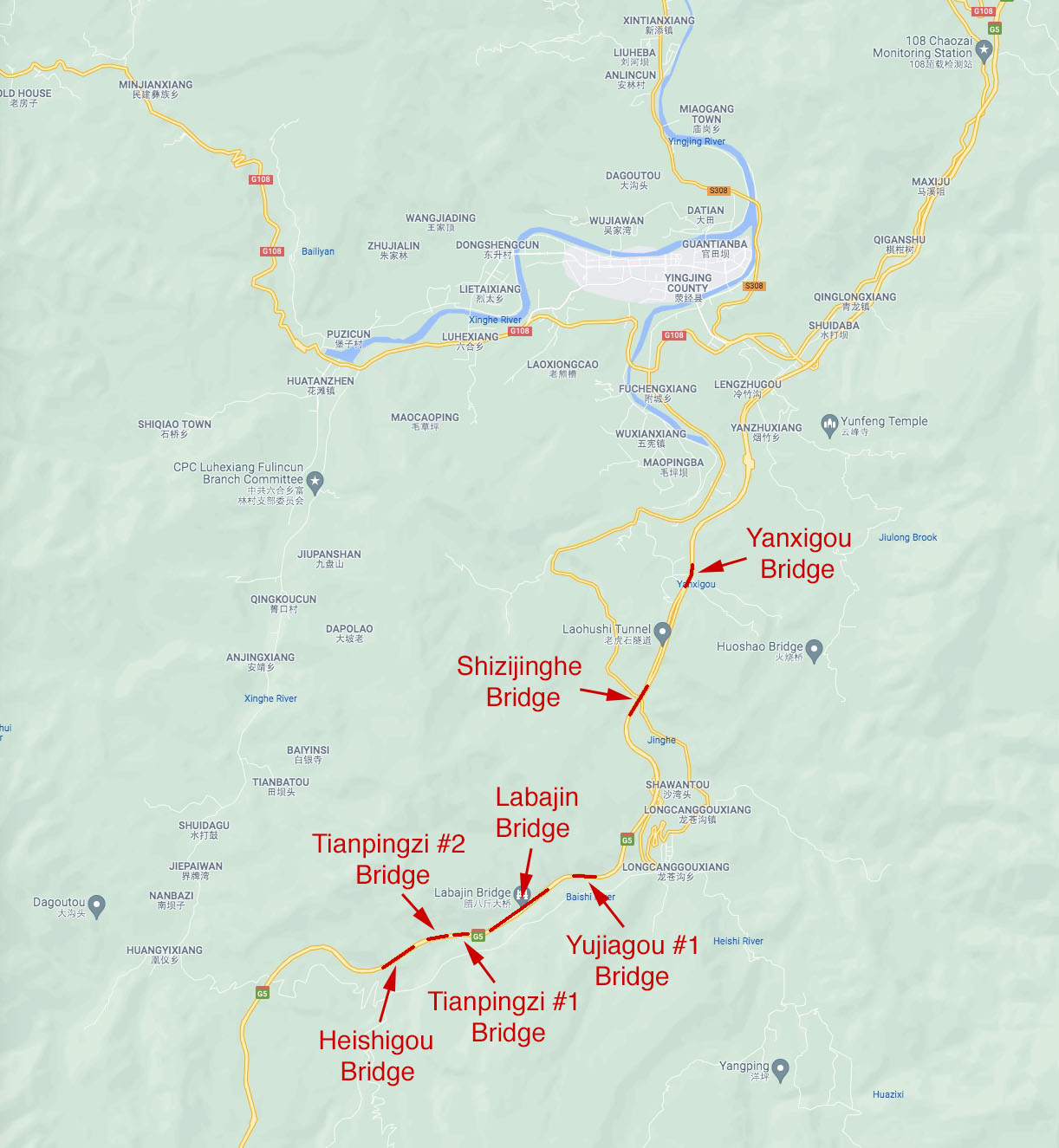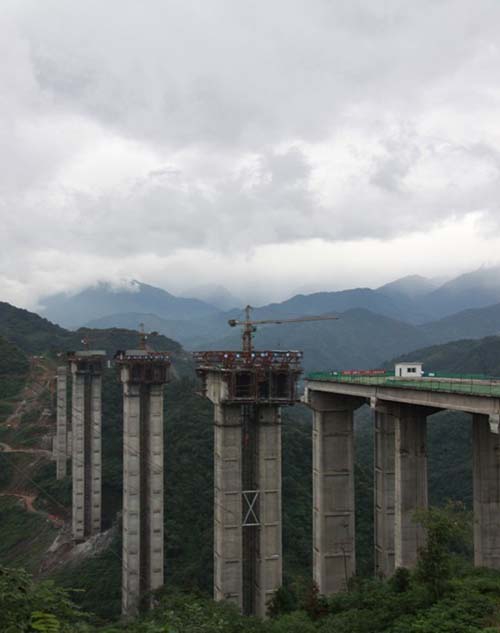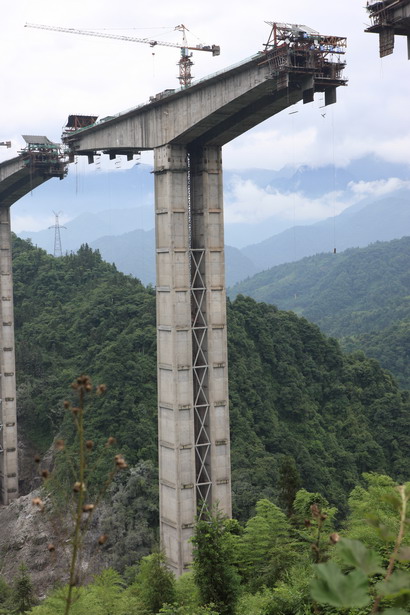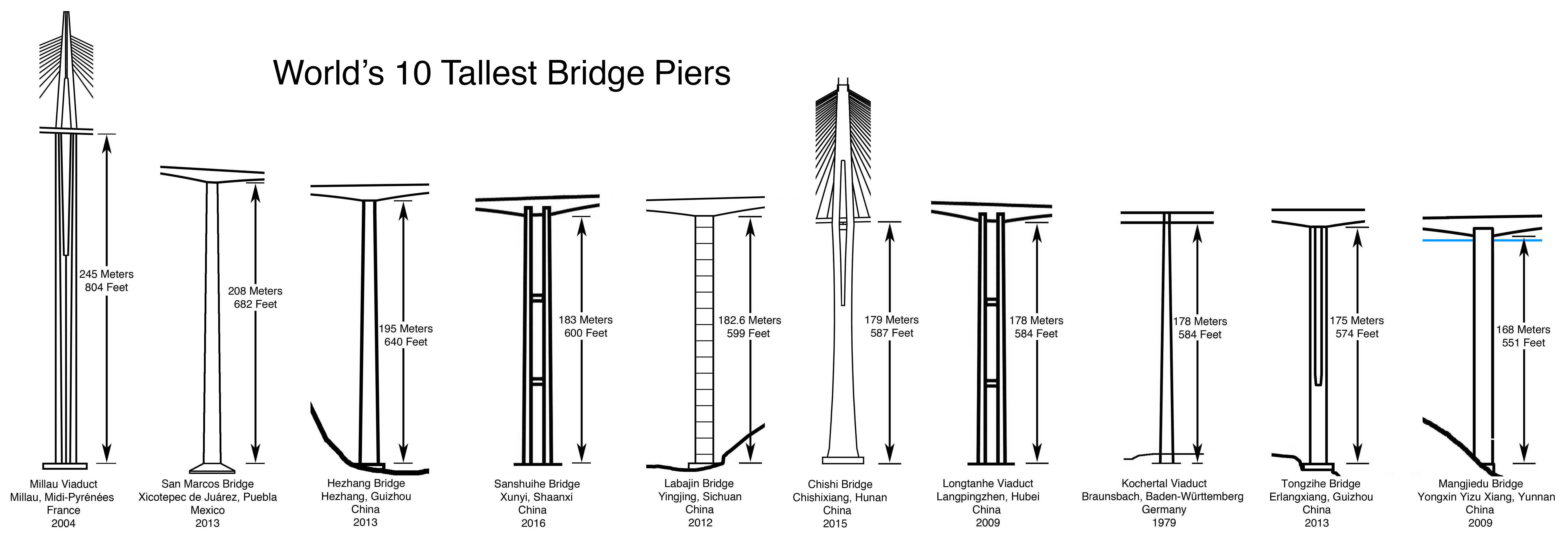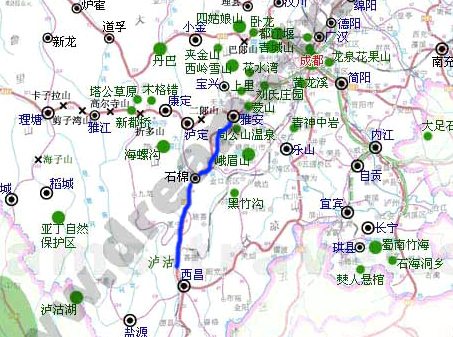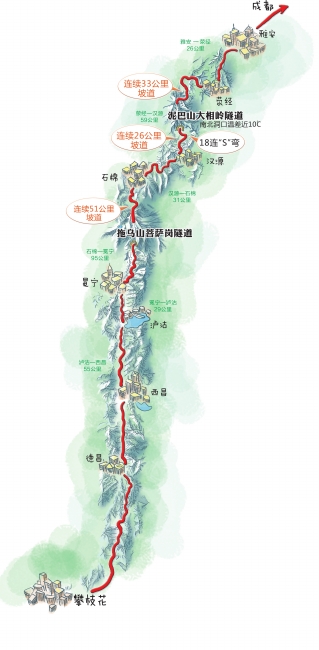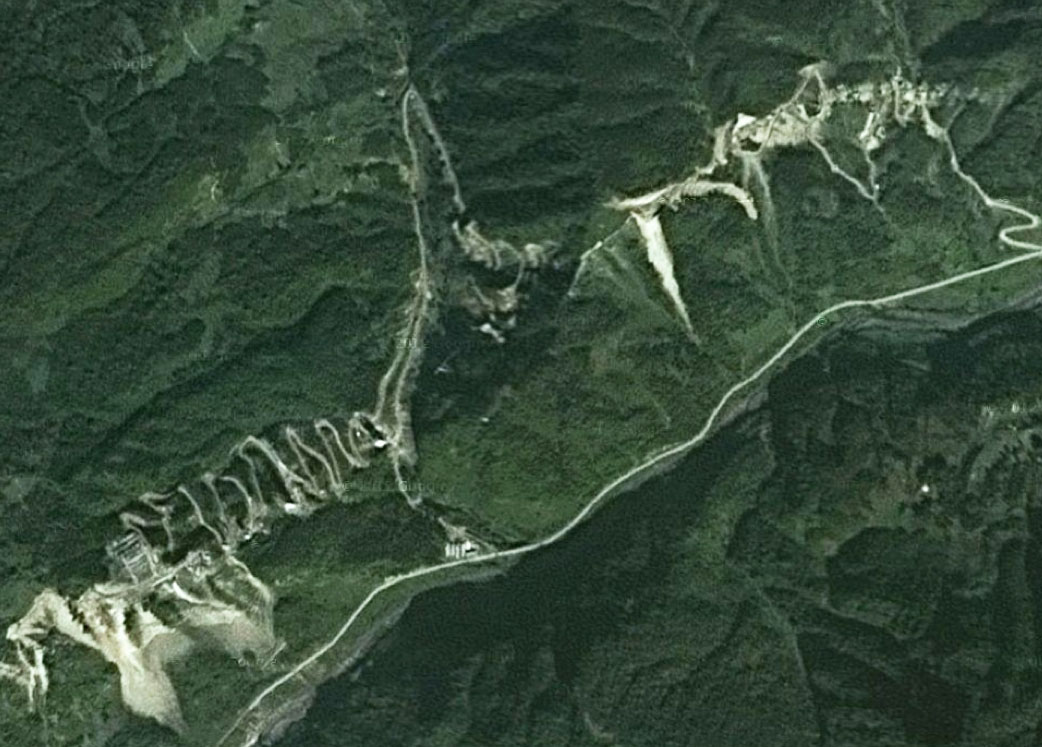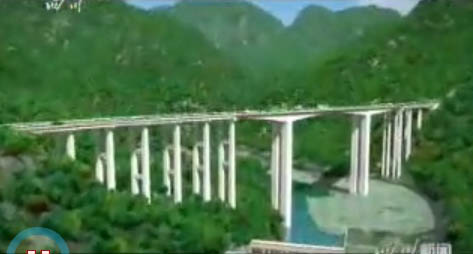Difference between revisions of "Heishigou Bridge"
(Created page with '<div style="font-size: 25px; text-align: center;"> Heishigou Bridge<br /> 黑石沟大桥<br /> Yingjing, Sichuan, China<br /> 623 feet high / 190 meters high<br /> 656 foot span…') |
|||
| Line 1: | Line 1: | ||
<div style="font-size: 25px; text-align: center;"> | <div style="font-size: 25px; text-align: center;"> | ||
Heishigou Bridge<br /> | Heishigou Bridge<br /> | ||
| − | + | 黑石沟特大桥<br /> | |
Yingjing, Sichuan, China<br /> | Yingjing, Sichuan, China<br /> | ||
623 feet high / 190 meters high<br /> | 623 feet high / 190 meters high<br /> | ||
656 foot span / 200 meter span<br /> | 656 foot span / 200 meter span<br /> | ||
2012<br /> | 2012<br /> | ||
| − | [[File: | + | [[File:Heishigou190mtrH.jpg|750px|center]] |
</div> | </div> | ||
| − | A sister bridge to the nearby Labajin crossing, the similarly designed Heishigou Bridge also uses a unique concrete | + | A sister bridge to the nearby Labajin crossing, the similarly designed Heishigou Bridge also uses a unique concrete pier design that the Chinese developed for just 3 large bridges on the Yaxi highway. The third bridge to use this first-ever technique is the Tangjiawan Bridge. |
| − | Although the two main piers of Heishigou Bridge are not as tall as those on Labajin, they are still among the world's tallest at 155 meters. The concept behind the SRC or steel reinforced concrete column is to combine the shear-wall strength of concrete but retain steel tubes for cross bracing and | + | Although the two main piers of Heishigou Bridge are not as tall as those on Labajin, they are still among the world's tallest at 155 meters. The concept behind the SRC or steel reinforced concrete column is to combine the shear-wall strength of concrete but retain steel tubes for cross bracing and maintain the skeletal strength of the piers to meet seismic requirements of bending and flexibility. The optimum height level for each concrete pier section was 12 meters which was partly determined by the weight of a 12 meter steel column which has a weight of 30 tons. The concrete is placed on both the outside and inside of the steel tubes making for a steel and concrete sandwich. At each 12 meter interval there is a flat concrete deck that gives the 4 walls rigidity. The two parallel piers are 13.8 meters by 6.8 meters at the base and taper to 10 by 6.8 meters at the cap. The 5.6 meter gap between the two parallel piers are connected by steel truss tubes. |
| − | |||
| − | |||
| + | The G5 Yaxi highway also has several impressive tunnels including the 10 kilometer long Daxiangling mud mountain tunnel with a maximum depth of 1650 meters with more then 5 kilometers of that length over 1000 meters deep. | ||
| + | |||
<div style="text-align: center; font-size: 25px;"> | <div style="text-align: center; font-size: 25px;"> | ||
| − | [[File: | + | [[File:HeishigouElevFinal.jpg|750px|center]]<br /> |
| − | + | Heishigou Bridge Elevation<br /> | |
</div> | </div> | ||
| − | + | [[File:HeishigouConstruction.jpg|750px|center]] | |
| − | |||
| − | |||
| − | |||
| − | |||
| + | [[File:YaxiExpswyHeishigouBridge.jpg|750px|center]] | ||
| − | |||
| − | |||
| + | [[File:YaxiExpswyHeishigou.jpg|750px|center]] | ||
| − | |||
| − | |||
| + | [[File:Heishigou黑石沟大桥200mtrSpan.jpg|450px|center]] | ||
| − | |||
| − | |||
| + | [[File:Heishigou黑石沟大桥190mtrH.jpg|750px|center]] | ||
| − | |||
| + | [[File:Heishigou黑石沟大桥152mtrPier.jpg|750px|center]] | ||
| − | |||
| + | [[File:HeighigouPierDesign.jpg|600px|center]] | ||
| + | Heishigou Bridge pier design. | ||
| − | |||
| + | [[File:HeishigouCrossSec.jpg|750px|center]] | ||
| − | |||
| − | |||
| + | [[File:HeishigouPierConstruction.jpg|450px|center]] | ||
| − | |||
| + | [[File:HeishigouPierBase.jpg|750px|center]] | ||
| + | Heishigou Bridge pier foundation design. | ||
| − | |||
| − | |||
| + | [[File:HeishigouPierBaseImage.jpg|750px|center]] | ||
| − | |||
| − | + | [[File:HeishigouSatellite.jpg|750px|center]] | |
| − | + | Heishigou Bridge satellite image. | |
| − | |||
| − | |||
| − | [[File: | ||
| − | |||
| − | [[File: | + | [[File:LabajinSatelliteWide.jpg|750px|center]] |
| − | + | Satellite view of Heishigou, Labajin and Shizijinghe Bridges on the G5 expressway. | |
| − | |||
| − | |||
| + | [[File:LabajinLocationMap.jpg|750px|center]] | ||
| + | Location map of Heishigou, Labajin and Shizijinghe Bridges. | ||
[[File:LabajinBridgeConstruction2.jpg|450px|center]] | [[File:LabajinBridgeConstruction2.jpg|450px|center]] | ||
Revision as of 06:50, 16 June 2013
Heishigou Bridge
黑石沟特大桥
Yingjing, Sichuan, China
623 feet high / 190 meters high
656 foot span / 200 meter span
2012
A sister bridge to the nearby Labajin crossing, the similarly designed Heishigou Bridge also uses a unique concrete pier design that the Chinese developed for just 3 large bridges on the Yaxi highway. The third bridge to use this first-ever technique is the Tangjiawan Bridge.
Although the two main piers of Heishigou Bridge are not as tall as those on Labajin, they are still among the world's tallest at 155 meters. The concept behind the SRC or steel reinforced concrete column is to combine the shear-wall strength of concrete but retain steel tubes for cross bracing and maintain the skeletal strength of the piers to meet seismic requirements of bending and flexibility. The optimum height level for each concrete pier section was 12 meters which was partly determined by the weight of a 12 meter steel column which has a weight of 30 tons. The concrete is placed on both the outside and inside of the steel tubes making for a steel and concrete sandwich. At each 12 meter interval there is a flat concrete deck that gives the 4 walls rigidity. The two parallel piers are 13.8 meters by 6.8 meters at the base and taper to 10 by 6.8 meters at the cap. The 5.6 meter gap between the two parallel piers are connected by steel truss tubes.
The G5 Yaxi highway also has several impressive tunnels including the 10 kilometer long Daxiangling mud mountain tunnel with a maximum depth of 1650 meters with more then 5 kilometers of that length over 1000 meters deep.
Heishigou Bridge pier design.
Heishigou Bridge pier foundation design.
Heishigou Bridge satellite image.
Satellite view of Heishigou, Labajin and Shizijinghe Bridges on the G5 expressway.
Location map of Heishigou, Labajin and Shizijinghe Bridges.
For those who might be interested, the list below shows the World's 10 Tallest Bridges as measured from the top of the foundation to the top of the tower. All are suspension or cable stayed bridges.
1. Hutong Bridge, China 345 meters
2. Millau Viaduct, France 336 meters
3. Russky Island Bridge, Russia 320 meters
4. Sutong Bridge, China 300 meters
5. Stonecutters Bridge, China 290 meters
6. Akashi-Kaikyo Bridge, Japan 287 meters
7. Chishi Viaduct, China 287 meters
8. Yi Sun-sin Bridge, South Korea 270 meters
9. Jingyue Bridge, China 265.5 meters
10. Guizhou Bridge, China 262 meters
Image by www.beiww.com
Yaxi Expressway Map.
Labajin Bridge satellite image.
A computer image of the Shizijinghe bridge that will be on the same highway.
